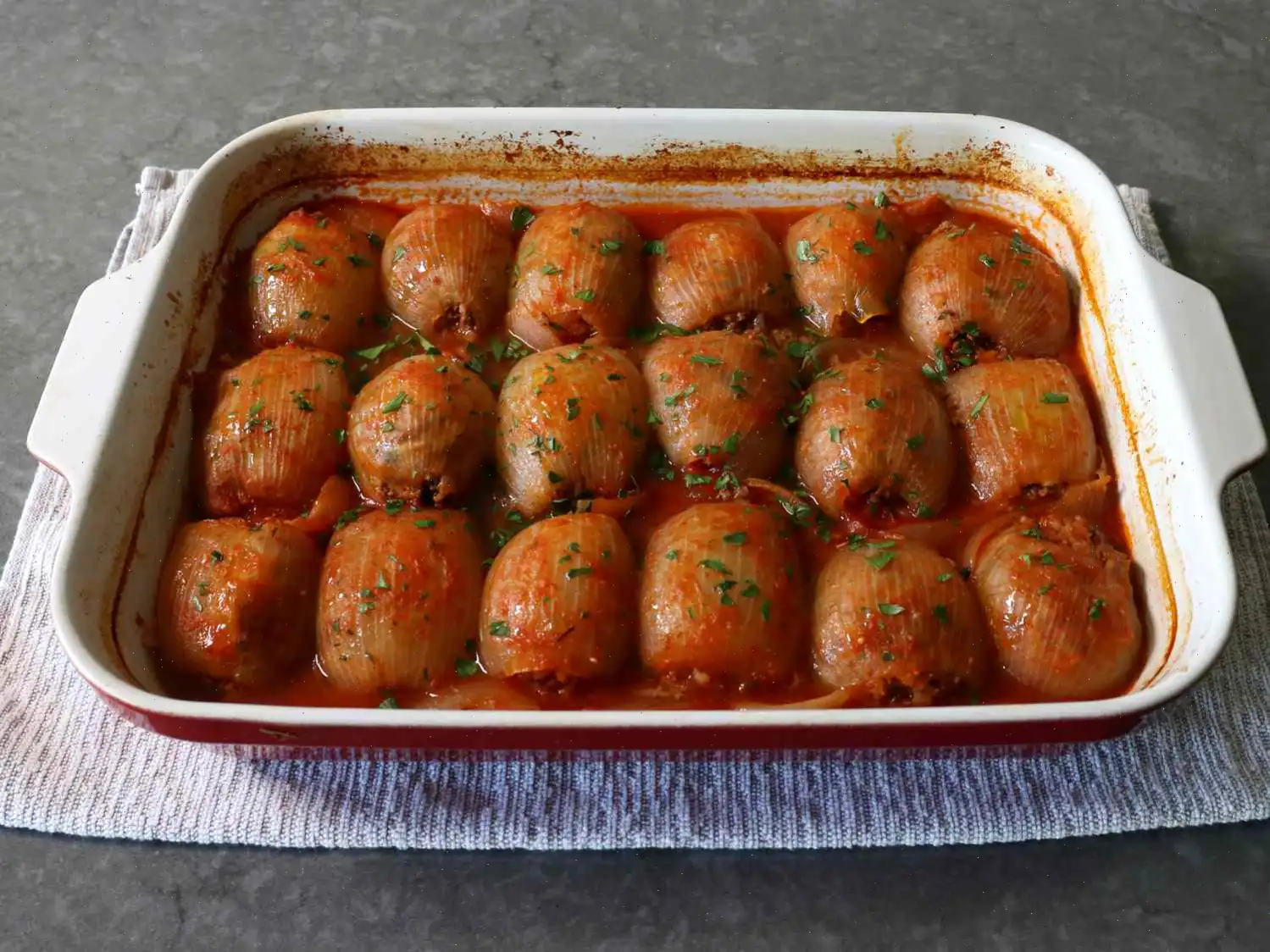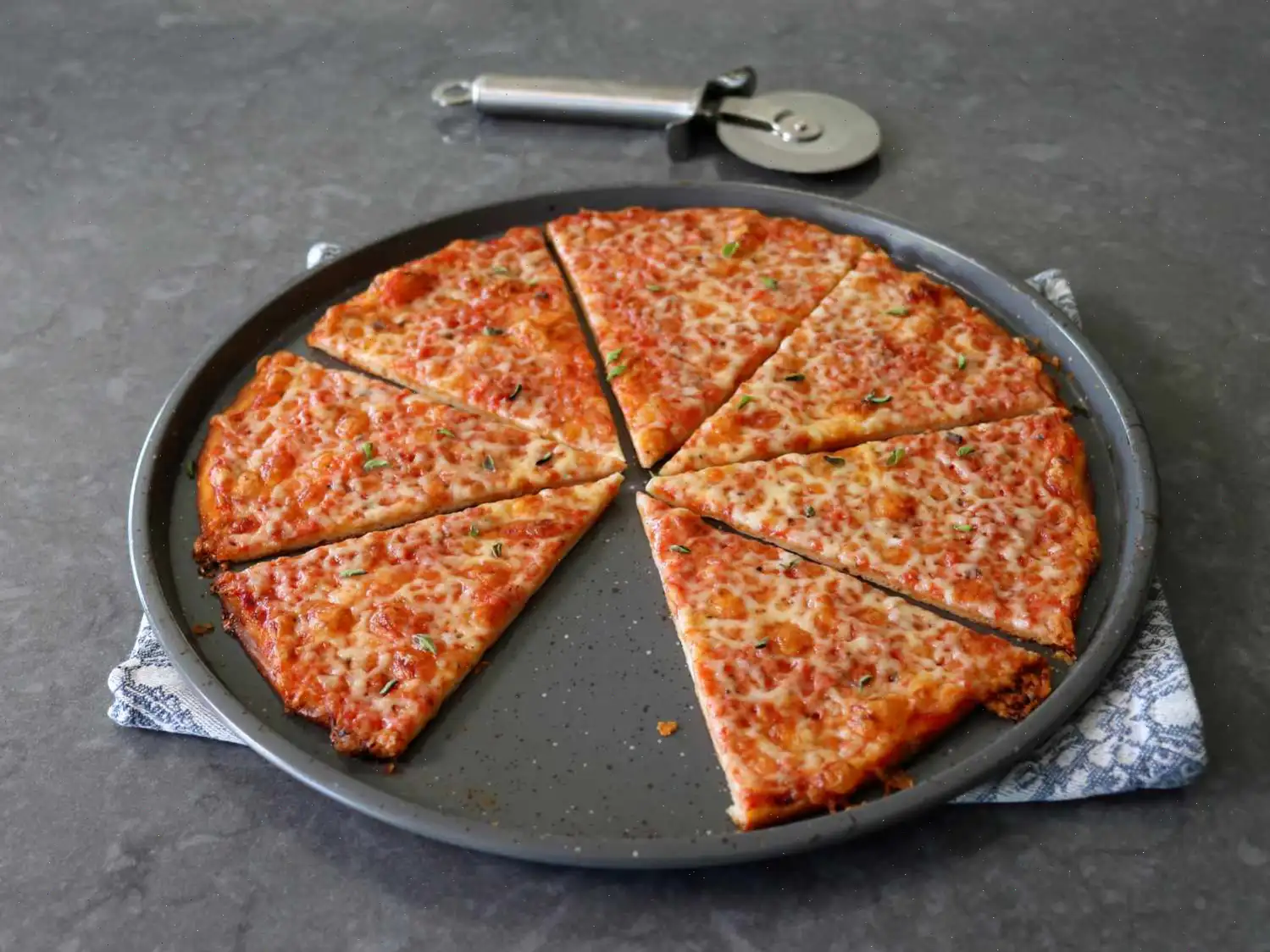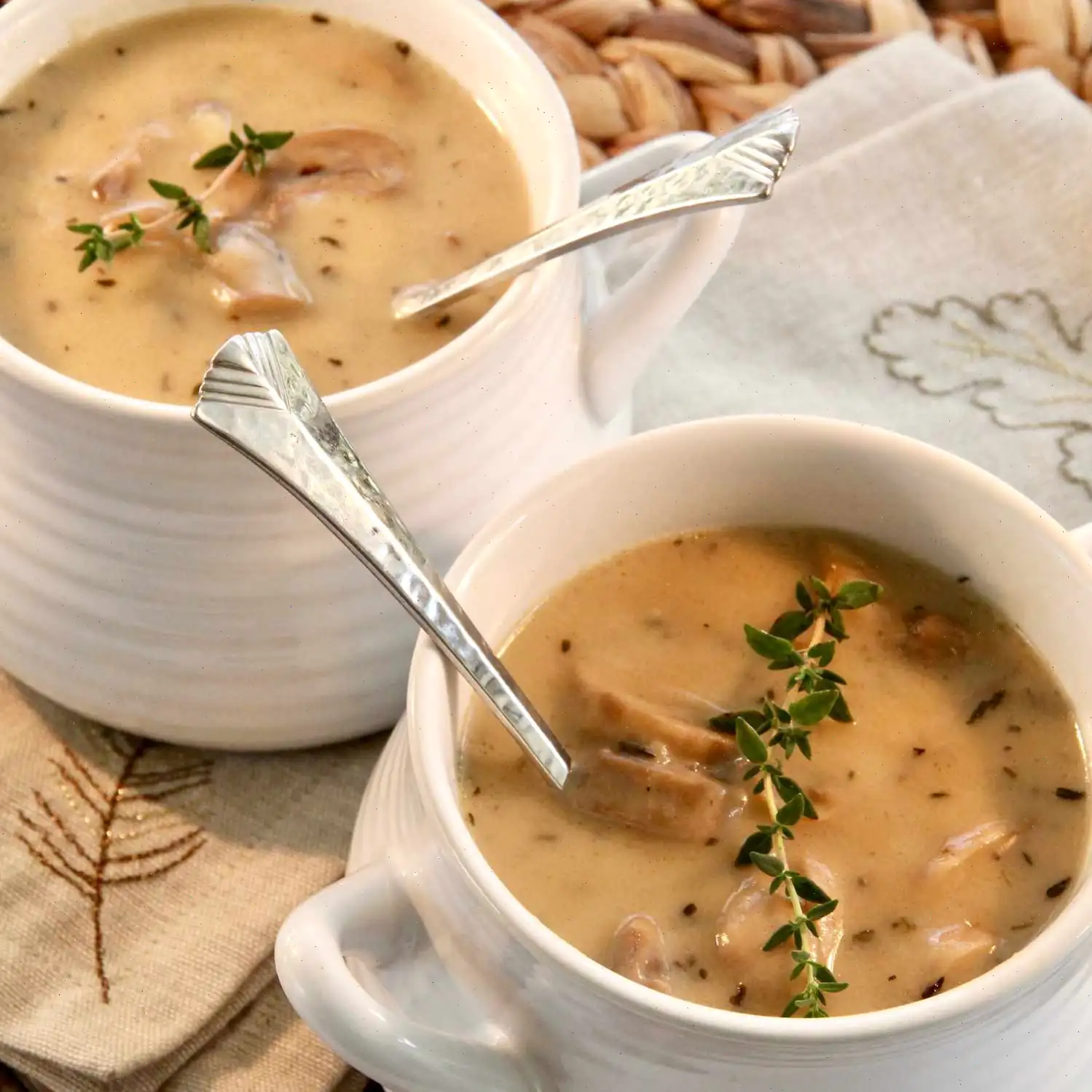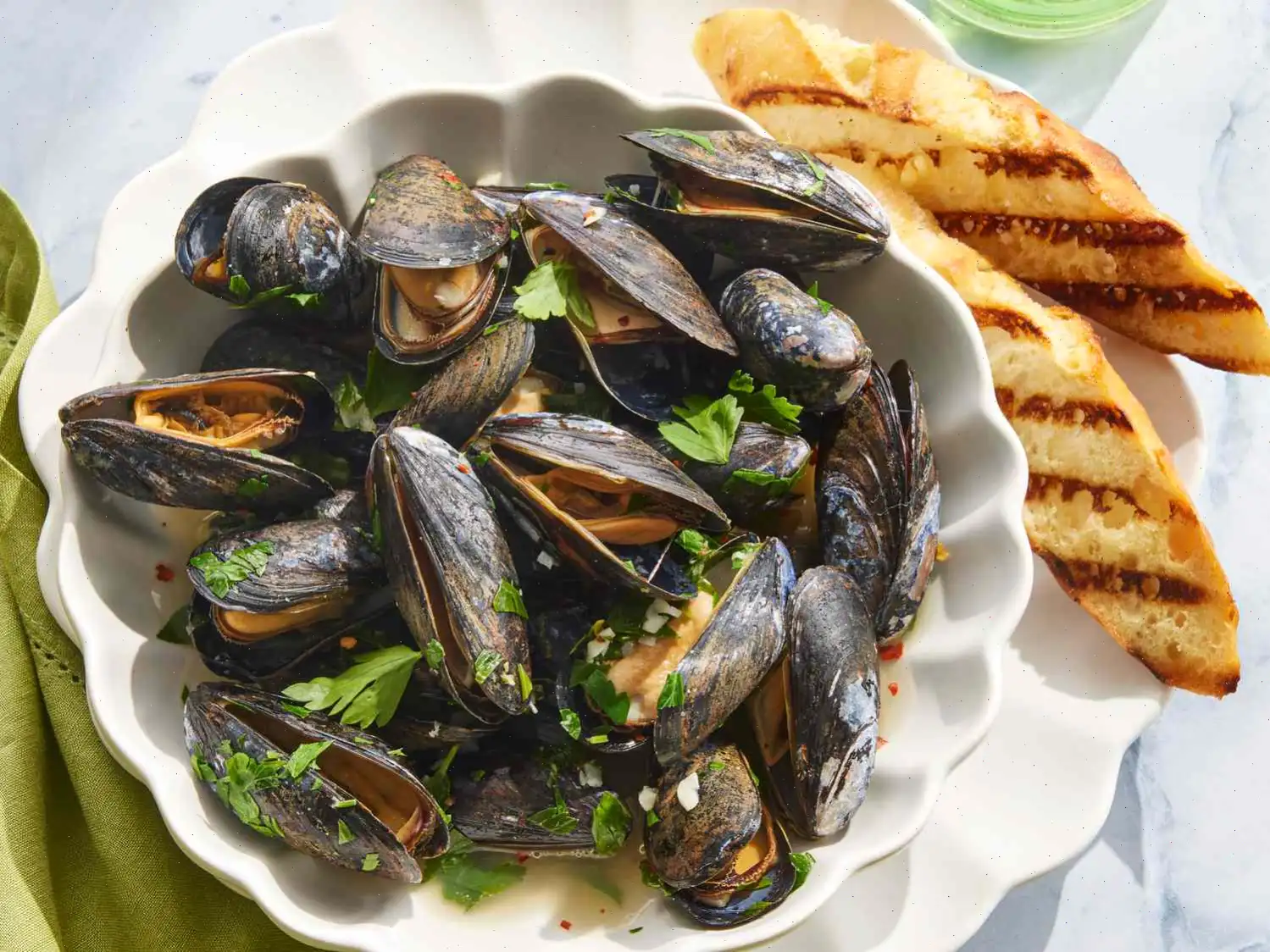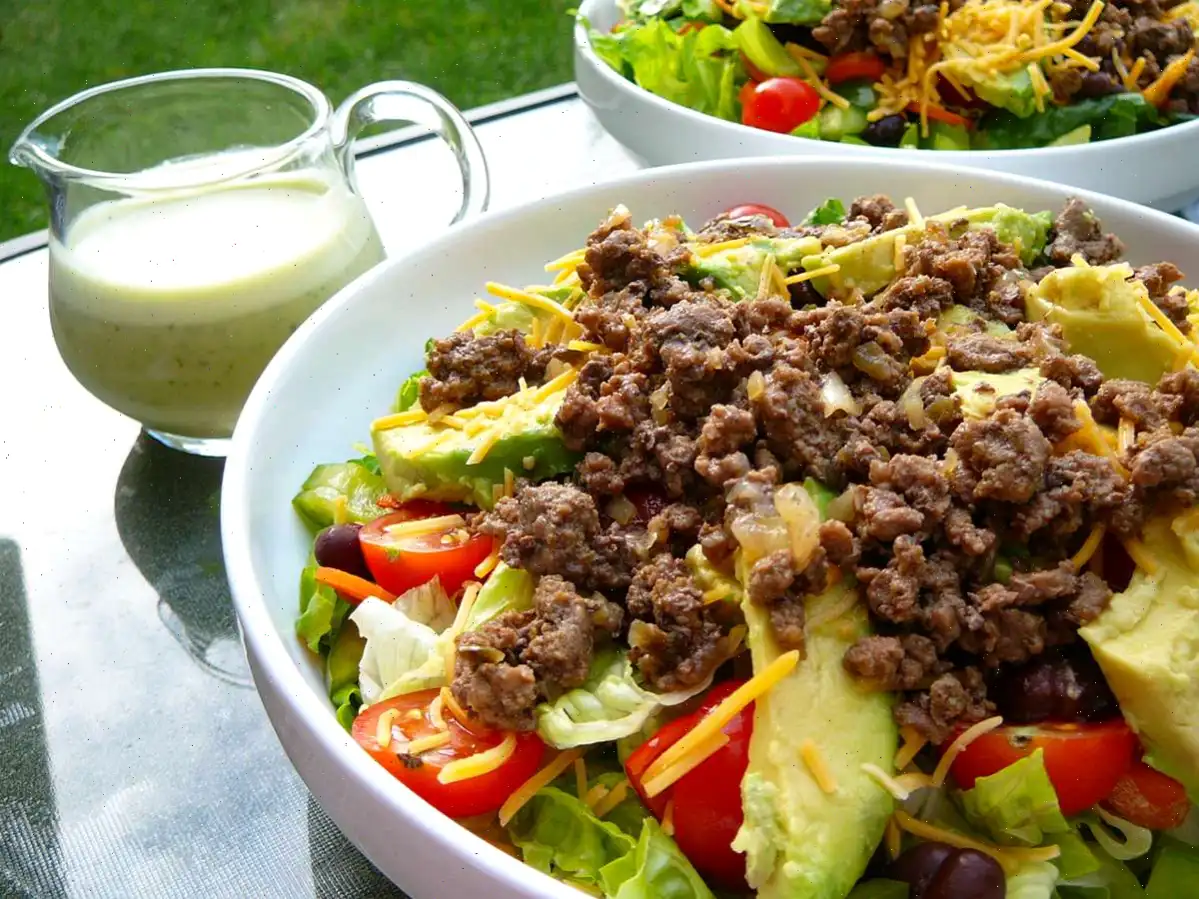
Greek Beef Stuffed Onions (Salantourmasi) Recipe
For those who love stuffed peppers and cabbage rolls, Greek beef-stuffed onions, or "salantourmasi," are a must-try. This dish has a wonderful combination of flavors and an ingenious method that makes it even better than expected. In this recipe, we separate the onion layers and roll the stuffing into them, a technique that works far better than trying to scoop out the onion center.
The filling is made with Greek-inspired beef, and while it's absolutely delicious, this technique offers a great opportunity for experimentation. You can try various fillings to suit your tastes. Lets dive into the recipe!
Ingredients
- 4 large yellow onions, peeled
- 1/4 cup olive oil, plus more for drizzling
- 1 pound ground beef, divided
- 1 cup diced onion
- 1 teaspoon freshly ground black pepper
- 2 teaspoons kosher salt
- 1 pinch cayenne pepper
- 4 garlic cloves, minced
- 1 teaspoon dried oregano
- 2 tablespoons tomato paste
- 3/4 cup white long grain rice
- 2 tablespoons red wine vinegar
- 1 1/2 cups chicken broth
- 1/3 cup crumbled Greek feta
- 1/4 cup chopped fresh parsley
- 1/4 cup chopped fresh mint
- 1/4 cup chopped fresh oregano, plus more for garnish
Tomato Broth
- 4 cups onion cooking water
- 2 cups tomato sauce
- 2 tablespoons chicken bouillon paste
Directions
Step 1: Cut 1 inch off each end of the onions. Stand the onion on a flat side, then make a single cut straight down from the top to the bottom of the onion.
Step 2: In a large saucepan, bring 6-8 cups of salted water to a simmer. Add the onions and cook for 20-30 minutes until soft enough for the layers to separate easily. Remove the onions using a slotted spoon and allow them to cool. Save the onion cooking water for the broth.
Step 3: While the onions are cooling, heat olive oil in a skillet over medium-high heat. Add half of the ground beef and cook, stirring occasionally, until the meat is browned and crumbly, about 5 minutes.
Step 4: Add 1 cup of diced onions, black pepper, salt, and cayenne to the skillet. Cook, stirring, until the onions are translucent, about 5 minutes.
Step 5: Add minced garlic, dried oregano, and tomato paste to the skillet. Stir and cook for another 2 minutes to combine the flavors.
Step 6: Add rice to the skillet and stir until it is evenly coated in the beef mixture. Pour in the red wine vinegar and chicken broth, reduce the heat to medium, and cook for about 20 minutes, or until the rice has absorbed all the liquid. Remove from heat and let the mixture cool to room temperature, about 15 minutes.
Step 7: Once the rice mixture has cooled, add the remaining half of the ground beef, crumbled feta, parsley, mint, and fresh oregano to the bowl. Stir everything together to combine. Refrigerate until needed.
Step 8: For the tomato broth, measure 4 cups of the reserved onion cooking water into a saucepan. Add tomato sauce and chicken bouillon paste, stir well, and bring the mixture to a simmer over high heat. Lower the heat and keep it warm.
Step 9: Preheat the oven to 375F (190C). Separate the onion layers and select the best 18 pieces, preferably from the middle of the onion bulb where the layers are long enough to cover the filling. If desired, tear or chop any extra onion and scatter it at the bottom of a large baking dish.
Step 10: Place about 2 rounded tablespoons of the rice mixture into each onion section, then roll the layers to cover the filling. Arrange the stuffed onions in the prepared baking dish and pour the tomato broth over them. Cover with foil and place the baking dish on a sheet pan to catch any drips.
Step 11: Bake in the preheated oven for 1 hour. After 1 hour, remove the foil and continue baking uncovered for another hour until the onions are tender and the filling is fully cooked. If the dish appears too dry, you can cover it with foil again.
Step 12: Let the stuffed onions rest for 10 minutes before serving. Garnish with fresh oregano before serving, if desired.
Nutrition Facts (per serving)
- Calories: 428
- Total Fat: 25g (32% Daily Value)
- Saturated Fat: 8g (38% Daily Value)
- Cholesterol: 76mg (25% Daily Value)
- Sodium: 1676mg (73% Daily Value)
- Total Carbohydrate: 26g (9% Daily Value)
- Dietary Fiber: 4g (14% Daily Value)
- Total Sugars: 10g
- Protein: 26g (52% Daily Value)
- Vitamin C: 20mg (22% Daily Value)
- Calcium: 137mg (11% Daily Value)
- Iron: 4mg (24% Daily Value)
- Potassium: 864mg (18% Daily Value)
* Percent Daily Values are based on a 2,000-calorie diet. Your daily values may be higher or lower depending on your calorie needs.
History and Origins of Greek Beef Stuffed Onions (Salantourmasi)
Greek Beef Stuffed Onions, known locally as Salantourmasi, have a rich history rooted in traditional Greek home cooking. The dish likely originated in rural Greek villages where families relied on locally available vegetables and preserved meats. Onions, a staple ingredient in Greek cuisine, were used not only for their flavor but also for their availability throughout the year. Combining onions with seasoned beef and rice became a practical way to create a hearty, nourishing meal, especially during colder months or festive occasions.
Regional Variations and Specialties
Salantourmasi varies by region in Greece. In northern Greece, cooks often incorporate red wine or local herbs such as mint and oregano, while in the Peloponnese, a heavier use of tomato paste and olive oil is typical. Some islands, like Crete, add a sprinkle of feta or graviera cheese to enrich the filling. The size of onions and the thickness of the layers can also differ, reflecting regional agricultural practices and taste preferences.
Differences from Similar Dishes
Although similar to stuffed cabbage rolls or dolmades, Greek Beef Stuffed Onions stand out due to their unique technique of separating onion layers and rolling the filling inside rather than hollowing out the onion entirely. Unlike dolmades, which often use grape leaves and a more delicate herb profile, salantourmasi emphasizes robust Greek flavors with garlic, oregano, and feta, giving the dish a distinctly savory and aromatic character. The slow-baked tomato-onion broth also sets it apart, ensuring the filling remains moist and flavorful.
Where It Is Typically Served
Salantourmasi is traditionally served as a main course during family gatherings, Sunday dinners, or festive celebrations such as Easter. It is also common in tavernas throughout Greece, often accompanied by a side of crusty bread or a fresh Greek salad. The dish is appreciated for its ability to be made in large quantities, making it ideal for communal meals and celebratory occasions.
Interesting Facts
- The name Salantourmasi comes from local Greek dialects, referencing the careful rolling and seasoning of meat inside vegetable layers.
- The onion cooking water, preserved and used as a base for the tomato broth, adds a subtle sweetness that balances the savory meat filling.
- In some families, leftover fillings are repurposed to make smaller, appetizer-sized rolls for parties, reflecting Greek ingenuity in minimizing waste.
- The dish is versatilemodern adaptations may include lamb, turkey, or even vegetarian fillings with lentils and grains.
- Though less known internationally than moussaka or souvlaki, salantourmasi is celebrated in Greece for its comforting, home-style flavor and intricate preparation.
FAQ about Greek Beef Stuffed Onions (Salantourmasi) Recipe
Comments
Kathey
10/06/2025 01:52:54 PM
Almost like making cabbage rolls..Very good with the onion flavor..
Stacy
03/16/2025 05:04:20 PM
I had about 1 1/3 lbs beef and used it all. Maybe my onions were smaller than Chef John’s and maybe I put a little less filling in each, but I ran out of onion wraps at 21 and still had filling. Not a problem. I put in small pieces of onion, some broth and the filling and made an 8x8 casserole that was tasty. I cooked the casserole and my rolls covered for one hour which was enough for the casserole and cooked the rolls for another half hour uncovered, which was also enough. This is definitely a fair bit of work, but the result was excellent. I’m thinking of doing this with lamb for an unusual and affordable Easter dinner.
Garden Crone
10/30/2024 10:39:25 PM
Although usually, videos are not my thing but the idea of stuffed onions was intriguing (hard to imagine I'd never run across it before as I'm a dedicated for-fun recipe reader). I thoroughly enjoyed listening to Chef John through the process. So personable, interesting and honest! Excellent tips through trial and error. Now I'm figuring how to make a vegetarian version. Thanks!
Laura Taylor
01/13/2025 02:17:36 AM
Even my picky eater loved it.


